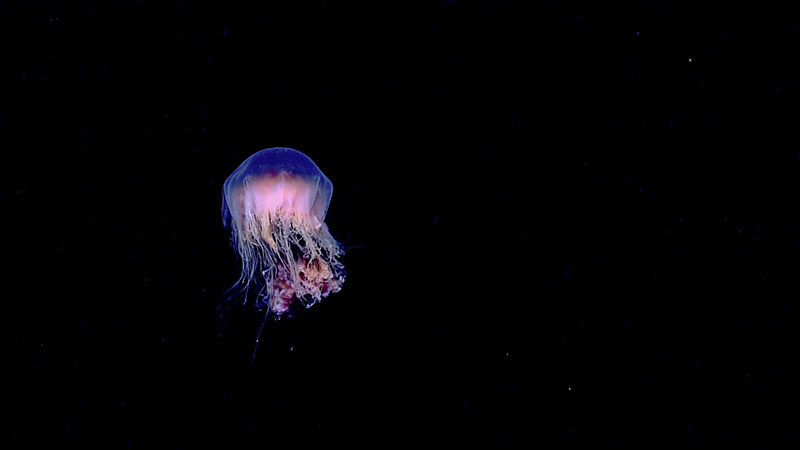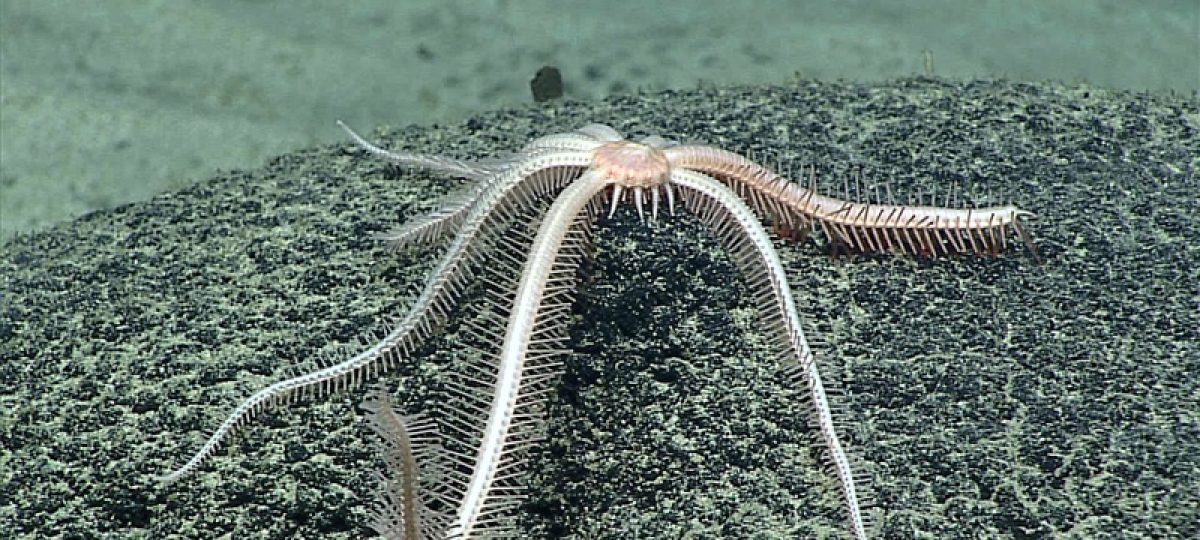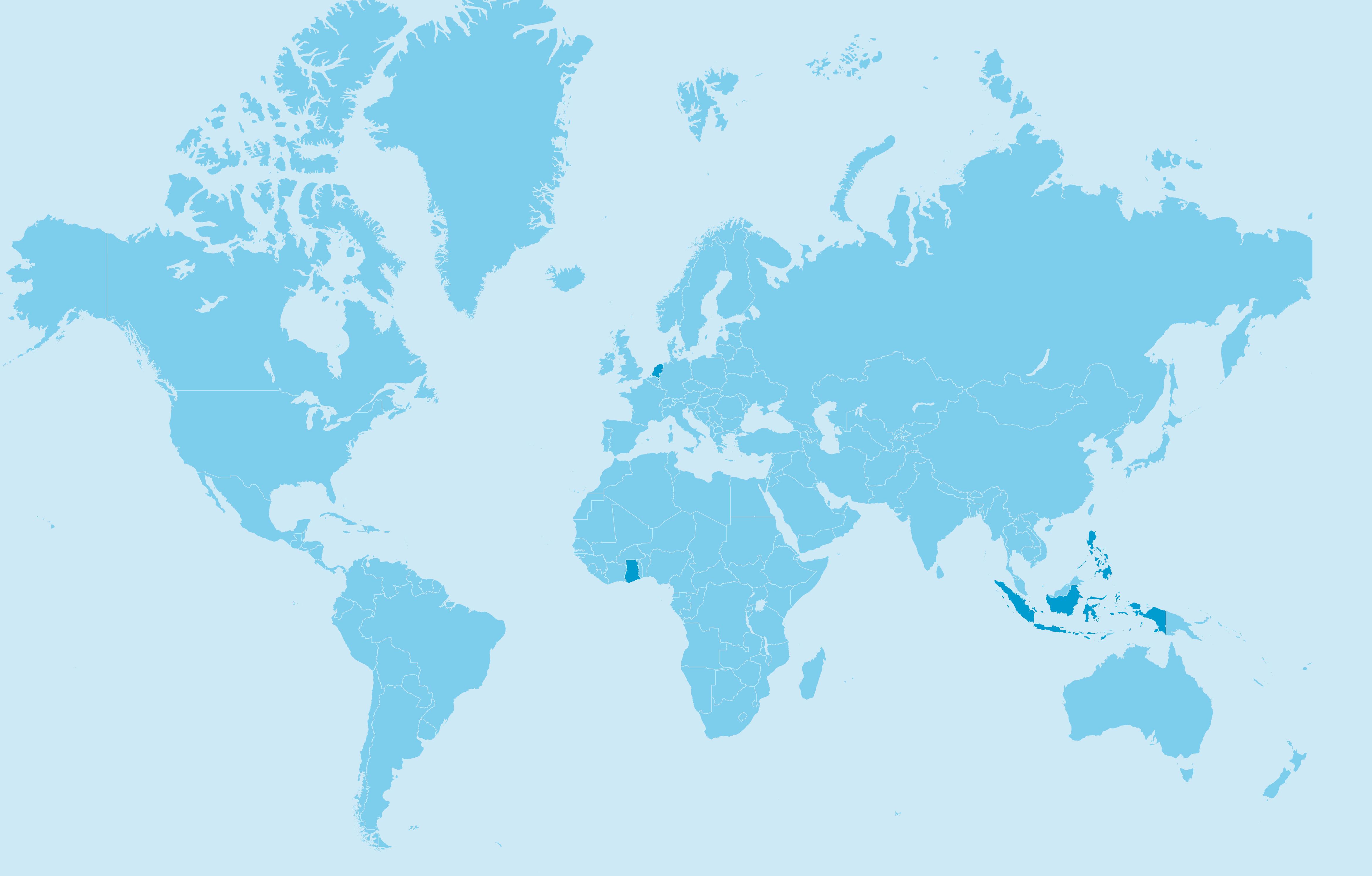Header photo: starfish on rock surface with manganese nodules © NOAA/OAR/OER, 2016 Deepwater Exploration of the Marianas, Leg 3.
The demand for minerals such as copper ore, bauxite (aluminium), cobalt, nickel, lithium and manganese is rising explosively due to the energy transition. These minerals are needed for the batteries of electric cars and for wind turbines, for example. There is no doubt that we need to accelerate the transition from fossil to renewable energy. But how do we ensure that we make this shift as fairly as possible, while minimising the negative impact on people and nature?
Bottom Line! supports a fair, sustainable energy transition with minimal impact on people and nature. A bottom line has to be established and monitored: a clear limit that indicates where and how mining may take place, to ensure damage to people and nature is limited and remains within set boundaries.
Bottom Line! approach
In order to achieve this, first and foremost, we need a circular approach, in which a reduction in energy consumption is a priority.
In addition, Bottom Line! promotes socially and ecologically sound mineral governance, reinforcing national policies to protect ecosystems, water, biodiversity and IP&LC rights, whilst enhancing mining sector transparency and accountability. We:
- advocate for no-go zones for mining in ecologically or culturally significant areas and for meaningful IP&LC participation, including women and youth, respecting their rights, including Free and Prior Informed Consent (FPIC), and the right to say no;
- support the implementation of the 2024 UN recommendations to ensure fairness and justice across transition mineral value chains;
- push for stricter requirements for the responsible extraction of raw materials. Mining should only use high-bar human rights and environmental standards, including for post-mining rehabilitation, such as IRMA.
Maartje Hilterman, project leader Bottom Line!‘We urgently need a system change that encourages us to be more prudent with our resources and to extract them responsibly and in a way that is truly future proof. Bottom Line! promotes a fair, responsible energy transition for people and nature.’
Areas threatened by mining
In Bottom Line! we strengthen CSOs and empower IP&LCs in mining landscapes in Indonesia, Ghana and the Philippines. We drive policy change by engaging policymakers and investors in those countries and internationally, promoting circularity and the IRMA standard, and raising awareness on protecting nature and human rights in mineral supply chains.
The focus landscapes are the Tompotika Forest in Indonesia, threatened by nickel mining; the Atewa Forest in Ghana, where there are plans for bauxite mining; and Tampakan in the Philippines, where indigenous communities are resisting the opening of a large-scale copper mine in a vulnerable river basin.
Furthermore, we dive into the deep sea of international waters, where ocean health, carbon sequestration capacity and vulnerable species yet to be discovered will be put at risk if mining would start there. e.
Video: nickel mining on Sulawesi
Electric cars are much better for the environment than petrol or diesel cars. But there is a downside to this alternative: with the increasing demand for electric cars, the demand for nickel is also increasing. Will the rise of the electric car cause the destruction of tropical forests?
Facts & Figures
- The World Bank estimates that in a ‘business as usual’ scenario the demand for raw materials that are needed for the energy transition, such as graphite, lithium, nickel and cobalt will grow by approximately 500 percent by 2050 as compared to 2018.
- The transition to green, renewable energy will require an estimated 3 billion tons of metals and minerals in the coming decades [1]source: https://www.worldbank.org/en/news/press-release/2020/05/11/mineral-production-to-soar-as-demand-for-clean-energy-increases.
- More than half of the mining required for the energy transition is located in indigenous peoples’ territories [2]source: https://www.nature.com/articles/s41893-022-00994-6.
- The World Bank estimates that in a ‘business as usual’ scenario the demand for raw materials that are needed for the energy transition, such as graphite, lithium, nickel and cobalt will grow by approximately 500 percent by 2050 as compared to 2018.
- The transition to green, renewable energy will require an estimated 3 billion tons of metals and minerals in the coming decades [3]source: https://www.worldbank.org/en/news/press-release/2020/05/11/mineral-production-to-soar-as-demand-for-clean-energy-increases.
- More than half of the mining required for the energy transition is located in indigenous peoples’ territories [4]source: https://www.nature.com/articles/s41893-022-00994-6.
Stricter mining laws and regulations

In and around these areas, Bottom Line! strengthens the voice of people and civil society organisations that stand up for nature and human rights, and advocate for stricter mining laws and regulations (including no-go zones) and their enforcement. When mining does take place, there must be a broad application of the IRMA standard for responsible mining, taking into account human rights such as local communities and indigenous peoples’ land rights, women’s rights and the natural environment.’
We share our knowledge and experiences from these (marine) landscapes with Dutch and European policymakers, the industry, financial institutions and end users. Towards these target groups, we advocate for a greater emphasis on reducing energy consumption and on reuse, recycling and circular design and for much stricter requirements on the sourcing of raw materials. In doing so, we also cooperate with the Initiative for Responsible Mining Assurance (IRMA), the Dutch Association of Investors for Sustainable Development (VBDO) and various national and international network partners.
A more transparent value chain
Bottom Line! sets an example in four unique (marine) landscapes and also takes important steps towards a transparent value chain with robust laws and regulations in which circularity plays an important role. In this manner, the high demand for raw materials will not lead to unnecessary delays in the energy transition on the one hand, and to human rights violations and the large-scale destruction or loss of nature in the production countries and the deep sea, on the other.

Video: side event at the COP16
At the COP16 in Colombia in October 2024, IUCN NL and partners organised the side event “Prosper with Nature: safeguarding biodiversity and human rights in energy transition mineral supply chains“.
In this keynote address, Olivia Lazard (Environmental Peacemaking and Mediation Expert at Carnegie Europe) talks about the need to safeguard the Earth’s ecological integrity and security in the scramble for energy transition minerals, such as nickel, lithium, copper and cobalt.


